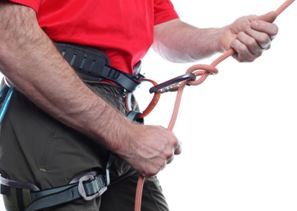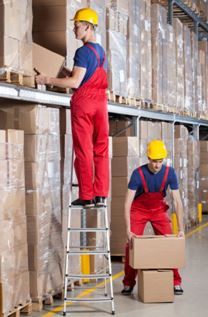Why safety at heights must remain a top priority for employers

According to the U.K.’s Health and Safety Executive (HSE), working at heights is still one of the biggest causes of major injuries and death for workers in Great Britain. Indeed, for the 2013/14 year, falls from heights accounted for 29 percent of fatal injuries to staff members, and were the most common cause of fatalities.
These numbers show that there will sadly continue to be many workers putting in a compensation claim for issues caused by working on ladders, rooftops, and other spots off the ground. Just recently, in fact, a Hertfordshire company, Titchfield Ltd., was fined £12,000 for a breach of the Work at Height Regulations 2005. The injured employee broke his pelvis and an arm after falling from a ladder while repairing a scrolling billboard in London in 2013.
As such, it’s incredibly important for business owners, managers, and their workers to understand the potential hazards of working at heights, and how to best avoid injuries and fatalities on the job. Read on for some top tips to minimising harm from height-related workplace accidents this year.
Plan Ahead
Before any work at heights is even started, it’s important to plan ahead. Firstly, examine the potential risks involved in any upcoming work and weigh up whether the potential hazard is worth it. Look at things such as the height involved, the length of time a worker will need to spend on a task at height, and the condition of the surface being worked on.
Where at all possible, avoid work at height and come up with an alternative that doesn’t pose such a risk to employees. If an airborne job is unavoidable, make sure that the worker is supervised, and that only well-trained and properly experienced staff are allocated the task.

Always have an emergency evacuation and rescue plan in place just in case something goes wrong. As well, take steps to prevent falls by using the right type of equipment, or utilising an existing place of work that has already been found to be safe.
Ensure that all workers can safely move about, stretch, and bend from their working position, and that they can also get to and from this spot without being at risk of falling or otherwise injuring themselves. Also keep an eye on floor hole covers, as these can often become a trip hazard.
As an employer, you need to provide personnel with protection from falling objects or structures. For example, ensure staff are making use of safety equipment such as a safety harness (correctly connected and accurately applied); a hard hat and/or gloves and goggles; and things such as guardrails, tower scaffolds, and scissor lifts. Any equipment that experiences an impact at any point must be replaced and never reused by workers.
Be Careful When Working From Ladders
One of the most common accidents that occur when people are working at heights is falling off a ladder. As such, it’s imperative that all ladders used on a work site are suitable for the job being completed, strong enough for the worker(s), well maintained, and regularly checked for faults.

Staff members should only work on a ladder for short stretches of time (preferably under 30 minutes), and extra precautions should be taken if they have to work on or near any fragile surfaces. Never stand a ladder on spots that are wet, icy, covered in snow, or muddy. Also stay well clear of electrical power lines.
Ladders should always be level (not used on uneven ground), stable, and preferably secured before workers use them. Personnel must check that the hinged metal braces on the ladder are locked down and straight before climbing up, as the equipment might buckle or fall over as they climb up or down if they’re not properly secured.
Ladder manufacturers recommend that people using this work tool should never sit or stand on the top step, and generally should avoid standing anywhere above the third highest rung. Workers should also not lean too far out to the left or right of the ladder, as this can cause it to topple over.
Staff members using a ladder should be encouraged to wear a tool belt or holster to carry any of the supplies or tools they might need for their work. This leaves both of their hands free for climbing up and down safely. Similarly, before moving the position of a ladder, workers should remove all tools and other materials from it so that no objects go flying and risk hitting them or their co-workers.



